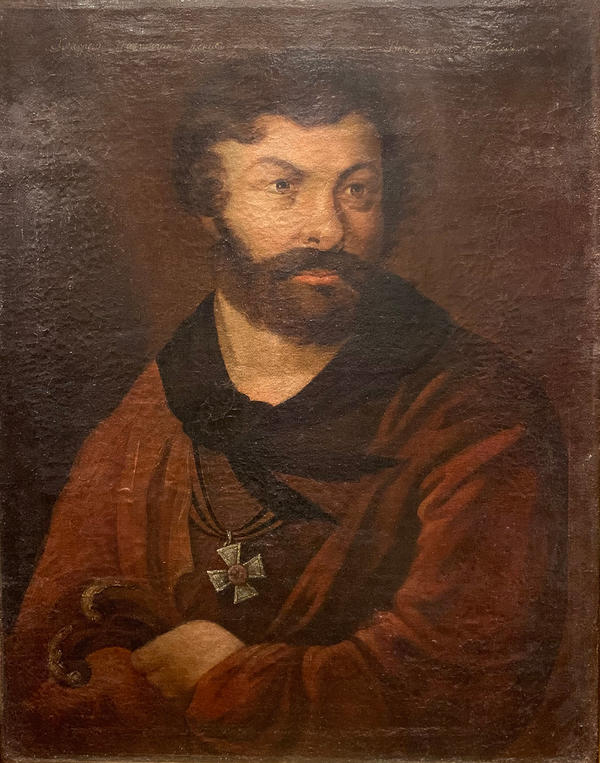The concept of ‘people’s war’ implies military operations involving not only troops, but also the civilian population (self-defense units, militias). The Patriotic War of 1812 became people’s war as soon as the enemy troops entered the Russian provinces. The majority of local residents joined the resistance, regardless of their social category.
Most often, resistance groups were formed under the leadership of local landowners and officials, but several groups were formed on the initiative of peasant communities and their leaders, as well as the lower rank soldiers who had fled from captivity.
The first armed detachments of peasants began to appear in Smolensk province. Small army units, resorting to guerrilla warfare, established contact with militia groups and linked together the isolated army units; they obtained and transmitted information about the size and the progress of the enemy army.
The guerrilla war on the flanks and in the rear consisted of many local military operations aimed to destroy the communications of the French army, deprive the enemy of necessary rest and in general, to demonstrate the scale of popular resistance and thus demoralize the enemy.
Acting in close cooperation with army partisan detachments or with large formations of provincial militias, small peasant partisan detachments contributed to the defense of their homeland. They destroyed marauders, carried out reconnaissance and delivered valuable information to the military, provided food support to regular military units of the Russian army.
Peasants were particularly dangerous for the retreating French. Each village became a fortress. With the approach of French foragers or an enemy detachment, gates were locked, supplies were hidden, and militia units attacked the enemy.
Thanks to the literary talent of its commander, a small detachment of Lieutenant Colonel D.V. Davydov gained popular fame. Later, Davydov even began to ascribe to himself the authorship of the very idea of using guerrilla warfare in 1812.
The portrait of D.V. Davydov is a copy of the engraving by A. Afanasyev on the drawing of V.P. Langer made in 1812. The war hero is depicted in peasant clothes: among the militia leaders, it was customary to change clothes so that the peasants would not mistake them for French officers. Davydov’s modest outfit is adorned with the Order of St. George of the 4th degree on a neck ribbon.
Most often, resistance groups were formed under the leadership of local landowners and officials, but several groups were formed on the initiative of peasant communities and their leaders, as well as the lower rank soldiers who had fled from captivity.
The first armed detachments of peasants began to appear in Smolensk province. Small army units, resorting to guerrilla warfare, established contact with militia groups and linked together the isolated army units; they obtained and transmitted information about the size and the progress of the enemy army.
The guerrilla war on the flanks and in the rear consisted of many local military operations aimed to destroy the communications of the French army, deprive the enemy of necessary rest and in general, to demonstrate the scale of popular resistance and thus demoralize the enemy.
Acting in close cooperation with army partisan detachments or with large formations of provincial militias, small peasant partisan detachments contributed to the defense of their homeland. They destroyed marauders, carried out reconnaissance and delivered valuable information to the military, provided food support to regular military units of the Russian army.
Peasants were particularly dangerous for the retreating French. Each village became a fortress. With the approach of French foragers or an enemy detachment, gates were locked, supplies were hidden, and militia units attacked the enemy.
Thanks to the literary talent of its commander, a small detachment of Lieutenant Colonel D.V. Davydov gained popular fame. Later, Davydov even began to ascribe to himself the authorship of the very idea of using guerrilla warfare in 1812.
The portrait of D.V. Davydov is a copy of the engraving by A. Afanasyev on the drawing of V.P. Langer made in 1812. The war hero is depicted in peasant clothes: among the militia leaders, it was customary to change clothes so that the peasants would not mistake them for French officers. Davydov’s modest outfit is adorned with the Order of St. George of the 4th degree on a neck ribbon.



